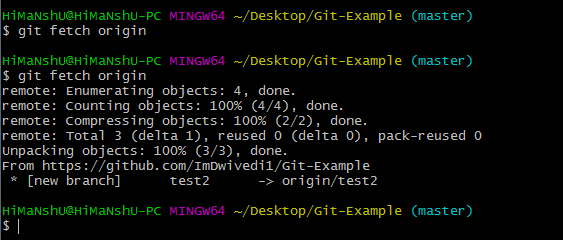
So, the number of commits depend on the commits contained in the pending PR. it's possible to issue more than 1 commit in a single PR). You should be able to see that the local repo is ahead of n commits that were part of the pending PR (i.e. If you want to merge this pending PR locally, then simply do: $ git merge FETCH_HEAD Now, the pending PR has been fetched into your local repo and the tip of your fetch would be in FETCH_HEAD.

$ git fetch original pull//head # 23, 123 etc., Then cd into the repository pytorch and then simply do: # after this, the unmerged PR should be pulled to your local repo So,įirst we'll have to do git remote add to the github remote repository: # I've given the name `original` you can give some other name as per your liking After that some volunteer/enthusiast has contributed some code and issued a PR to the remote repository but it has not been merged into the master or any other branch yet. But this may Cause Conflicts to occur, so it’s recommended to use Git Pull with a clean copy. actually what it does is a combination of Git Fetch and Git merge one after another.
#Git fetch a branch update#
I'll assume that one has already cloned a repo (for e.g. Git Pull-This will update your local branch with the origin/main branch i.e. I have also asked GitHub to give us a copy paste cheatsheet on the web UI at: On Ubuntu 14.04, the Go on the repositories is too old, so GVM is the best option: bash < <(curl -LSs '') Installing hub on Linux is currently a pain if you're not familiar with Go, but worth it. So if further commits get pushed, we can git fetch them directly. That branch is set to track the original branch on the fork, i.e.git/config contains: Note the good branch name which was automatically set for us.

We are now on a branch called - that contains the PR. Is a GitHub CLI helper that deals with this and other use cases beautifully using extra information from the GitHub API.


 0 kommentar(er)
0 kommentar(er)
